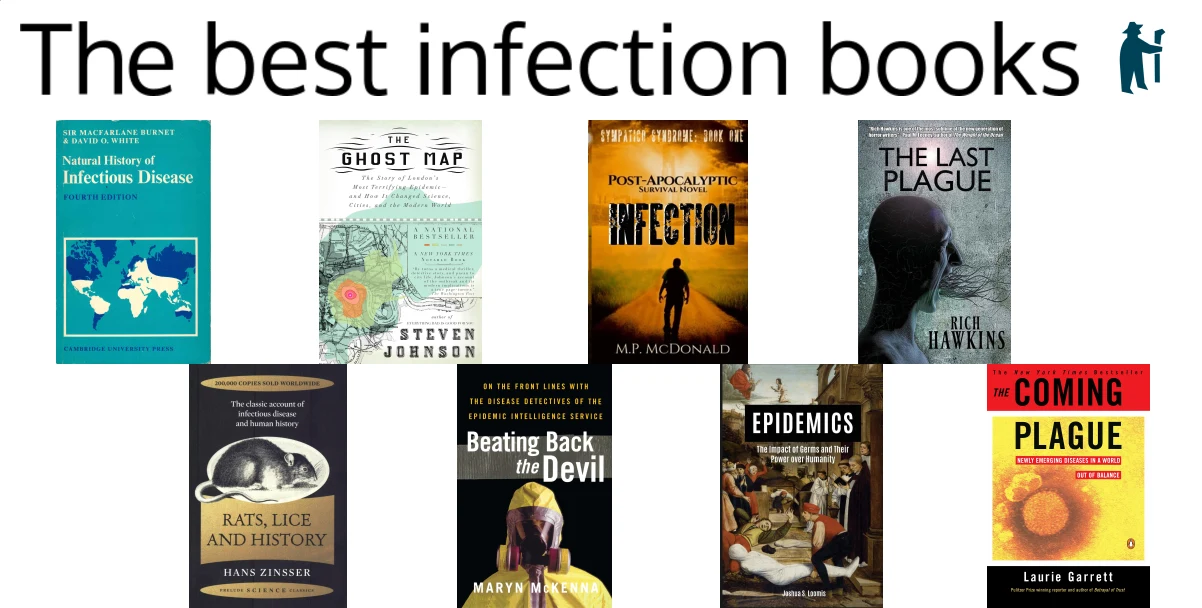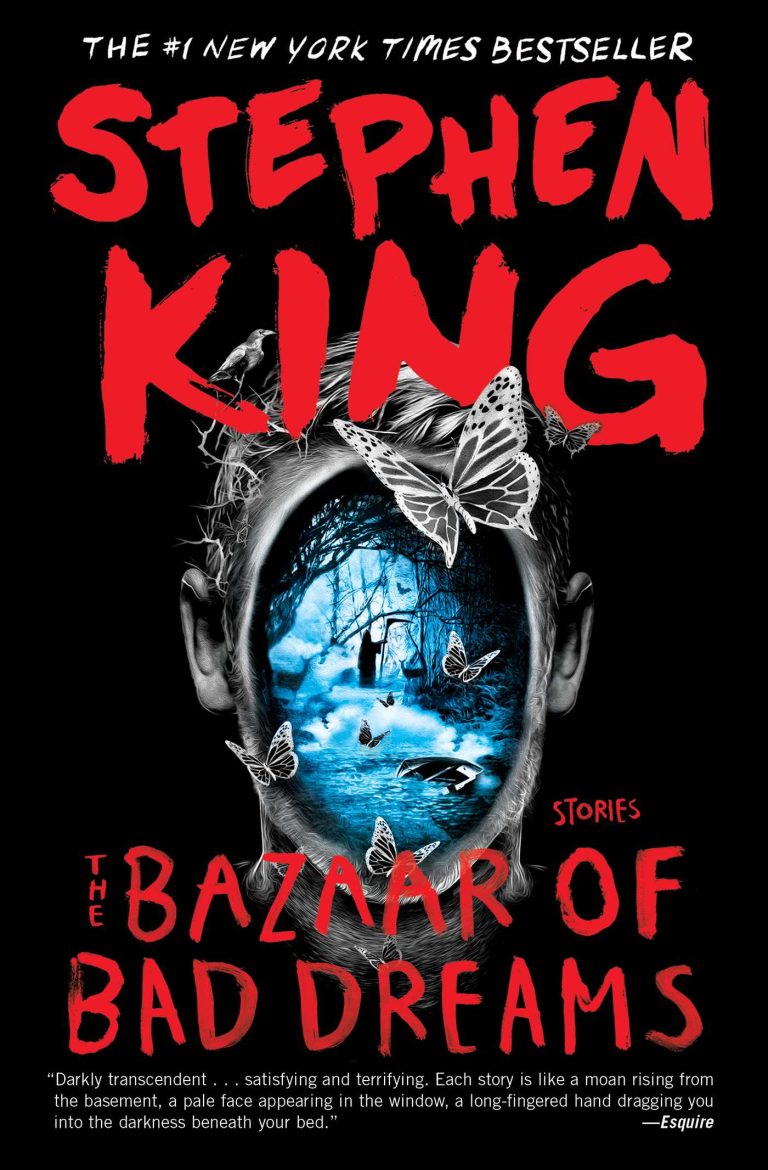The Haunting Epidemics: Disease And Infection In Stephen King’s Books
Picture this: a world shrouded in darkness, where fear and terror lurk around every corner. Now, imagine that world plagued not only by supernatural creatures and evil forces, but also by something much more sinister – disease and infection. In the twisted and macabre universe of Stephen King’s books, epidemics become haunting nightmares that grip readers with both fascination and dread. From the unrelenting spread of the superflu in “The Stand” to the chilling outbreak of rabies in “Cujo,” King weaves tales that explore the terrifying consequences of diseases gone awry. In this article, we will delve into the haunting epidemics that populate the pages of Stephen King’s books and uncover the dark secrets they hold.
Stephen King, the master of horror and suspense, has a knack for tapping into our deepest fears. While his stories often feature supernatural elements, it is the grounding in reality that makes them all the more chilling. By incorporating diseases and infections into his narratives, King brings a sense of plausibility to his tales of terror. Whether it’s a deadly pandemic sweeping through a post-apocalyptic world or a canine infected with a rabies-like virus, these epidemics serve as more than just plot devices – they become characters in their own right, leaving an indelible mark on the reader’s psyche. So, join us as we explore the chilling world of disease and infection in Stephen King’s books, where the line between fiction and reality blurs, and nightmares become all too real.
Stephen King’s books have been known to explore various themes, and one recurring element is the haunting presence of disease and infection. From the eerie outbreak in “The Stand” to the supernatural contagions in “Cell” and “Dreamcatcher,” King’s novels often delve into the horrors of epidemics. These stories serve as cautionary tales, reminding us of the potential devastation that can arise from unchecked diseases. Through his vivid descriptions and masterful storytelling, King manages to grip readers with a chilling portrayal of the terrifying effects of infectious diseases.

The Haunting Epidemics: Disease and Infection in Stephen King’s Books
Stephen King is renowned for his ability to captivate readers with his chilling stories and vivid imagination. While his books are often associated with supernatural creatures and terrifying events, they also explore the theme of disease and infection. In this article, we will delve into the haunting epidemics depicted in Stephen King’s books and how they add depth to his narratives.
The Role of Disease in Stephen King’s Books
Disease and infection play a significant role in many of Stephen King’s novels, serving as a catalyst for the horrors that unfold. King skillfully weaves these elements into his stories, using them to heighten tension and create a sense of unease. Through his vivid descriptions and detailed characterizations, he brings these epidemics to life and explores their psychological and physical impacts on his protagonists.
One notable example is the outbreak of the “superflu” in King’s novel “The Stand.” This deadly pandemic wipes out a majority of the world’s population, leaving only a few survivors to navigate a post-apocalyptic landscape. King’s portrayal of the societal breakdown and the struggle for survival in the face of disease is both haunting and thought-provoking.
The Psychological Impact of Disease
In addition to the physical consequences, Stephen King delves into the psychological impact of disease on his characters. The fear and uncertainty that come with the spread of infection create a sense of paranoia and dread. Characters are forced to confront their own mortality and make difficult choices in order to survive.
One such instance can be found in “The Girl Who Loved Tom Gordon,” where a young girl named Trisha becomes lost in the woods and must face the threat of disease and infection. As she battles hunger, dehydration, and the constant fear of unseen dangers, Trisha’s mental state deteriorates, blurring the line between reality and her own vivid imagination.
King’s exploration of the psychological toll of disease adds a layer of complexity to his narratives, allowing readers to empathize with the characters and experience their fears firsthand.
The Haunting Epidemics in Stephen King’s Works
Throughout his extensive body of work, Stephen King has introduced readers to a multitude of haunting epidemics. These epidemics not only serve as plot devices but also reflect larger societal fears and anxieties. Let’s explore some of the most memorable examples.
The Haunting Epidemic in “Cell”
In “Cell,” King presents readers with a terrifying epidemic that spreads through a mysterious pulse sent via cell phones. Those who are exposed to the pulse become mindless, violent creatures, known as “phoners.” This haunting depiction of an epidemic shows King’s ability to tap into contemporary fears surrounding technology and its potential consequences.
The Infectious Horrors of “The Tommyknockers”
“The Tommyknockers” introduces readers to an insidious alien infection that slowly takes over the residents of a small town. As the infection spreads, it grants individuals supernatural powers but also drives them to madness. King uses this epidemic to explore the destructive nature of power and the lengths people will go to attain it.
The Terrifying Outbreak in “Dreamcatcher”
“Dreamcatcher” follows a group of friends who become entangled in an otherworldly epidemic caused by an alien organism. This epidemic manifests in physical deformities and grotesque creatures, adding a body horror element to the narrative. King expertly combines elements of science fiction and horror to create a truly haunting depiction of an epidemic.
The Psychological Infection in “Misery”
While not a traditional epidemic, “Misery” delves into the psychological infection that occurs when an obsessed fan holds an author captive. The protagonist, Paul Sheldon, becomes trapped in a twisted relationship with his captor, Annie Wilkes, who infects his mind with her deranged obsession. King’s exploration of the psychological impact of this “infection” highlights the power of manipulation and the horrors that can arise from obsession.
Overall, Stephen King’s incorporation of disease and infection in his novels adds depth and realism to his narratives. By exploring the physical and psychological impact of epidemics, he taps into our deepest fears and forces us to confront the fragility of our existence. Through his masterful storytelling, King continues to captivate readers with his haunting depictions of disease and infection in his books.
The Haunting Epidemics: Disease and Infection in Stephen King’s Books
- Stephen King’s books often feature haunting epidemics that grip the characters and readers alike.
- Through vivid descriptions, King creates a sense of fear and suspense surrounding diseases and infections.
- These epidemics serve as metaphors for societal fears and anxieties.
- King’s use of disease and infection adds a chilling element to his stories, heightening the horror.
- By exploring the impact of epidemics, King highlights the fragility of human existence and the potential for devastation.
Frequently Asked Questions
Here are some frequently asked questions about the haunting epidemics, diseases, and infections in Stephen King’s books:
1. Are diseases and infections a common theme in Stephen King’s books?
Yes, diseases and infections are a recurring theme in Stephen King’s books. King often uses these elements to create a sense of fear and unease in his stories. Whether it’s a deadly virus spreading through a small town or a mysterious illness plaguing a group of characters, diseases and infections play a significant role in many of King’s narratives.
King’s ability to tap into our collective fear of contagious diseases adds an extra layer of horror to his stories. By exploring the devastating effects of epidemics and infections, he taps into our deepest anxieties and forces us to confront our own mortality.
2. Which Stephen King books feature haunting epidemics?
Several of Stephen King’s books feature haunting epidemics that leave a lasting impact on the characters and the readers. One notable example is “The Stand,” where a deadly virus known as Captain Trips wipes out most of the population, leaving the survivors to face a post-apocalyptic world. Another book, “Cell,” explores the aftermath of a mysterious pulse that turns people into mindless killers.
Other books like “Dreamcatcher” and “The Tommyknockers” also delve into the consequences of infectious outbreaks, showcasing King’s ability to create chilling narratives around epidemics and their effects on society.
3. How does Stephen King portray diseases and infections in his books?
Stephen King portrays diseases and infections in his books with great detail and realism. He often delves into the medical aspects, describing symptoms, transmission methods, and the physical and emotional toll they take on the characters. King’s meticulous research and attention to detail make the diseases and infections in his books feel frighteningly plausible.
In addition to the physical aspects, King also explores the psychological impact of diseases and infections on his characters. He examines how fear, paranoia, and desperation can consume individuals and communities in the face of an epidemic.
4. Why do diseases and infections add to the horror in Stephen King’s books?
Diseases and infections add to the horror in Stephen King’s books because they tap into our primal fears. The idea of being infected by a deadly disease or witnessing the rapid spread of an epidemic strikes at the core of our vulnerability and mortality. King masterfully uses these fears to create a sense of dread and helplessness in his readers.
Furthermore, diseases and infections often serve as catalysts for other supernatural or horrifying events in King’s stories. They act as triggers, intensifying the terror and propelling the narrative forward. By combining the horror of contagion with elements of the supernatural, King creates a unique blend of psychological and supernatural horror.
5. How do diseases and infections contribute to the overall themes in Stephen King’s books?
Diseases and infections contribute to the overall themes in Stephen King’s books by highlighting the fragility of human existence and the unpredictability of the world we live in. They serve as reminders of our mortality and the potential devastation that can arise from an outbreak.
These themes also explore the human response to adversity and the lengths people will go to survive in the face of a deadly epidemic. King often examines the breakdown of society and the emergence of both the heroic and the monstrous in times of crisis. Through diseases and infections, he delves into complex moral dilemmas and explores the dark side of human nature.
Top 10 Stephen King Novels
Final Thoughts: Unraveling the Horrific World of Disease and Infection in Stephen King’s Books
As we delve deeper into the haunting pages of Stephen King’s novels, we uncover a chilling truth—the presence of disease and infection as recurring themes. From the devastating outbreak of the superflu in “The Stand” to the mysterious horrors of the prom-night massacre in “Carrie,” King masterfully intertwines the terror of the supernatural with the very real dread of epidemics. Through his vivid storytelling, he reminds us of the fragility of our existence and the ever-present threat of unseen enemies.
In exploring these nightmarish scenarios, King taps into our primal fears and exposes the vulnerabilities of human nature. His narratives serve as cautionary tales, forcing us to confront our own mortality and the consequences of our actions. The relentless spread of disease becomes a metaphor for the destructive forces that lurk within society, challenging us to confront the darkness that resides both within ourselves and in the world around us.
King’s skillful portrayal of disease and infection goes beyond mere horror; it serves as a reflection of our societal fears and anxieties. By using these unsettling motifs, he captures our attention and keeps us enthralled until the final page. His ability to blend the supernatural with the mundane makes his stories all the more relatable, resonating with readers on a deeply human level.
In conclusion, Stephen King’s exploration of disease and infection in his books is a reminder of the fragility of life and the terrifying capacity of the unseen to wreak havoc. Through his unique blend of horror, suspense, and social commentary, King has created a chilling tapestry that reflects our deepest fears and forces us to confront the darkness within. So, brace yourself, dear reader, for the nightmarish landscapes and infectious horrors that await you in the pages of Stephen King’s haunting tales.






